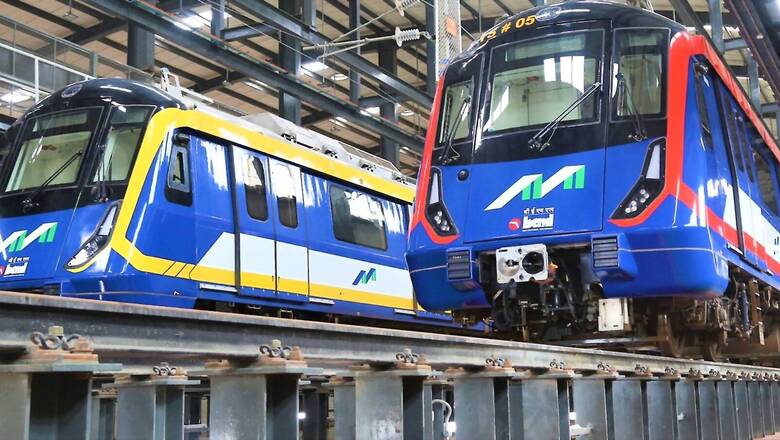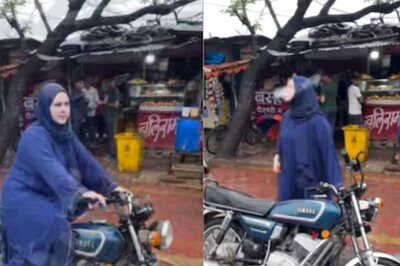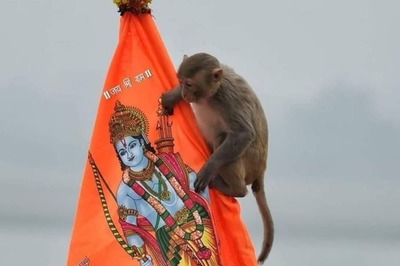
views
Mandar Chitre, a 43-year-old software professional, lives in Borivali. Every morning, he leaves his house by 7.45 am to reach his office at Bandra Kurla Complex. He reaches Borivali Metro station, boards a train till Gundavali and takes an auto-rickshaw to his office. The entire journey does not take him more than 40 minutes now but up until a few days ago, he would spend almost double the time on the same route. What has changed in the last few days? The new Metro lines – 2A and 7.
Prime Minister Narendra Modi inaugurated the two new lines between Andheri and Dahisar only last month and Mumbai’s roads are already healing. The new lines have not only drastically reduced travel time but are also helping decongest major roads of the city.
They are working out to everyone’s benefit – from shorter travel time to the common mobility card and overall state-of-the-art experience. The lines have reduced travel time for Mumbai residents, cutting down traffic on Western Express Highway and on local trains, giving them a comfortable ride in an air-conditioned rake at reasonable prices – saving time, money and effort.
“The efficiency has increased. Travel time has reduced. Most importantly, the current travel is hassle-free and quiet. It is comfortable. I can almost immediately get on to my calls after boarding the Metro. Earlier, the noise during the road journey was a hindrance. Now, I save time and feel a lot fresher,” Chitre told CNN-News18.
Though this is only a partial relief for him as he still has to take the road to travel from Gundavali to BKC, he said the full commissioning of lines will provide tremendous relief for not just him but for lakhs of commuters.
And he has a point. Since the commissioning of Metro 2A and 7, Phases I and II, over 1.2 crore commuters have used it in less than a year. The ridership will only grow once the lines are fully operational. A total of 22 trains provide 245 services daily on the new lines. Each train has six rakes, with one reserved for women.
The lines provide direct east-west and north-south connectivity to Mumbai’s northern suburbs. This has partially eased congestion on the WEH and the overstretched local train network. “This is the best gift for Mumbaikars! It is very economical and fast. You can save money, you can save your time,” said a passenger.
In the ladies’ compartment, Sakshi said she could not have wished for anything better. Working at a bank in Goregaon, she would travel by an autorickshaw and be drenched in sweat by the time she reached her workplace. Today, she spends half the time commuting. “Since there is a separate ladies’ compartment, it is less crowded, it is safer. I get a place to sit and it reminds me of my hometown Delhi. I used to travel by Metro all the time. This one is just as comfortable,” she said.
“When the entire Maha Mumbai Metro network will be operational, we will create a carrying capacity of 1 crore everyday plus 40 lakh on suburban trains. There will be no congestion then,” said IAS officer Pravin Darade, who was additional metropolitan commissioner and project director between 2016 and 2019 when the detailed project reports (DPR) were prepared.
“In the next three years, Mumbai will be hugely infrastructure robust,” said SVR Srinivas, metropolitan commissioner, MMRDA.
Mumbai residents happy
“If you think of humans as capital, this might help increase productivity. The hustle of travel really takes a lot. This is directly proportional to the productivity of a human being. Once people realise the benefit of Metro travel, more will move to it. I have completely moved to Metro now,” said a commuter peeping over Bhalchandra Nemade’s Tukaram.
“This is just so comfortable. We have to go to Goregaon. Earlier, we would have had to take a local to Dadar, then change to a local train and go to Goregaon. This is so convenient and time saving,” said an elderly man travelling with luggage and his entire family including a child.
Another person took the Metro only for the experience of it. “The staff is so helpful! I told them where I had to go. They helped me with ticketing and boarding,” he said.
‘Response better than expected’
Urban planners are pleasantly surprised by the tremendous response the two lines have received. “There are four major routes that have seen partial decongestion – SV Road, Link Road, the suburban rail network and the WEH. While this was expected, what is being seen is substantially better.
People are moving away from private cars and autorickshaws to the Metro. It is a welcome move and a much-needed one. Mumbai transport arteries have saturated well beyond its capacity,” said prominent urban planner Pankaj Joshi.
When asked if this was an intervention at the right time, he said key infrastructure projects in Mumbai were already delayed by a few decades but are most welcome whenever they are commissioned. “If you look at all the infrastructure projects, they were planned in the 1950s. A lot of things were expected to come up,” he said, adding that the biggest challenge was to make commuting seamless.
Seamless travel effort
One of the most important features introduced by the MMRDA is the National Common Mobility Card-Mumbai 1. The card envisages to offer a seamless travel experience to commuters, who can use it to buy tickets on any Metro line not just in Mumbai but across India. It can also be used to buy tickets on city buses, and people can shop with it as well, said Srinivas.
“Seamless travel is the need of the hour. Even now, that continues to be a challenge. People have to change levels, buy tickets,” said Joshi.
In the right direction
Srinivas said the ridership data showed MMRDA was heading in the right direction. “If you study statistics for the last 20 years, Mumbai has witnessed a decline in public transport share and that is dangerous. Any city, which is worth its salt, especially a megapolis like Mumbai should have a robust public transport system. In that context, the commissioning of these two lines – up and down 70 km – is the first step in that direction. This will have an impact in the reduction of that trend,” he said.
Read all the Latest India News here

















Comments
0 comment